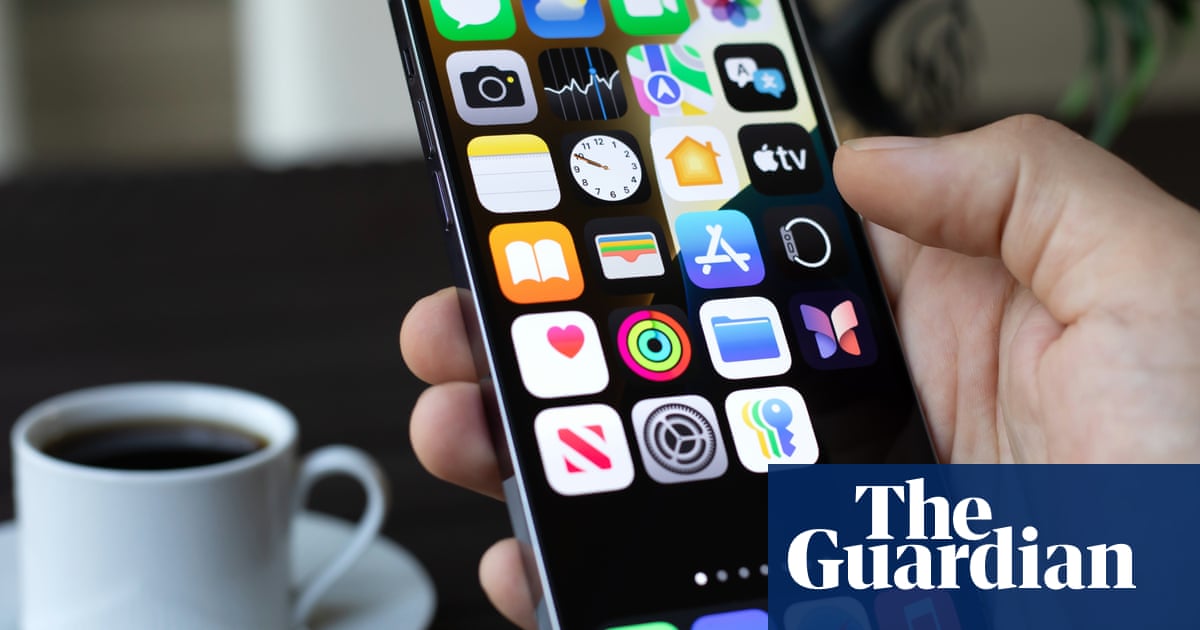Don’t worry, you’re not going mad.
If you feel the autocorrect on your iPhone has gone haywire recently – inexplicably correcting words such as “come” to “coke” and “winter” to “w Inter” – then you are not the only one.
Judging by comments online, hundreds of internet sleuths feel the same way, with some fearing it will never be solved.
Apple released its latest operating system, iOS 26, in September. About a month later, conspiracy theories abound, and a video purporting to show an iPhone keyboard changing a user’s spelling of the word “thumb” to “thjmb” has racked up more than 9m views.
“There’s a lot of different forms of autocorrect,” said Jan Pedersen, a statistician who did pioneering work on autocorrect for Microsoft. “It’s a little hard to know what technology people are actually employing to do their prediction, because it’s all underneath the surface.”
One of the godfathers of autocorrect has said those waiting for an answer might never know just how this new change works – especially considering who is behind it.
Kenneth Church, a computational linguist who helped to pioneer some of the earliest approaches to autocorrect in the 1990s, said: “What Apple does is always a deep, dark secret. And Apple is better at keeping secrets than most companies.”
The internet has been rumbling about autocorrect for the past few years, since even before iOS 26. But there is at least one concrete difference between what autocorrect is now and what it was several years ago: artificial intelligence, or what Apple termed, in its release of iOS 17, an “on-device machine learning language model” that would learn from its users. The problem is, this could mean a lot of different things.
In response to a query from the Guardian, Apple said it had updated autocorrect over the years with the latest technologies, and that autocorrect was now an on-device language model. They said that the keyboard issue in the video was not related to autocorrect.
Autocorrect is a development on an earlier technology: spellchecking. Spellchecking started in roughly the 1970s, and included an early command in Unix – a coding language – that would list all the misspelled words in a given file of text. This was straightforward: compare each word in a document with a dictionary, and tell a user if one does not appear.
“One of the first things I did at Bell Labs was acquire the rights to British dictionaries,” said Church, who used these for his early work in autocorrect and for speech-synthesis programs.
Autocorrecting a word – that is, suggesting in real time that a user might have meant “their” as opposed to “thier” – is far harder. It involves maths: the computer has to decide, statistically, if by “graff” you were more likely referring to a giraffe – only two letters off – or a homophone, such as “graph”.
In advanced cases, autocorrect also has to decide if a real English word you’ve used is actually appropriate for context, or if you probably meant that your teenage son was good at “math” and not “meth”.
Up until a few years ago, the state-of-the-art technologywas n-grams, a system that worked so well most people took it for granted – except when it seemed unable to recognise less-common names, prudishly replaced expletives with unsatisfying alternatives (something which can be ducking annoying) or apocryphally changed sentences such as “delivered a baby in a cab” to “devoured a baby in a cab.”
after newsletter promotion
Put simply, n-grams are a very basic version of modern LLMs such as ChatGPT. They make statistical predictions on what you’re likely to say based on what you’ve said before and how most people complete the sentence you’ve begun. Different engineering strategies affect what data an n-gram autocorrect takes in, says Church.
But they are state-of-the-art no longer; we’re in the AI era.
Apple’s new offering, a “transformer language model”, implies a technology that is more complex than old autocorrect, says Pedersen. A transformer is one of the key advances that underpins models such as ChatGPT and Gemini – it makes these models more sophisticated in responding to human queries.
What this means for new autocorrect is less clear. Pedersen says that whatever Apple has implemented, it is likely to be far smaller than familiar AI models – otherwise it could not run on a phone.
But crucially, it is likely to be far harder to understand what is going wrong in new autocorrect than in previous models, because of the challenges of interpreting AI.
“There’s this whole area of explainability, interpretability, where people want to understand how stuff works,” said Church. “With the older methods, you can actually get an answer to what’s going on. The latest, greatest stuff is kind of like magic. It works a lot better than the older stuff. But when it goes, it’s really bad.”

.png) 15 hours ago
10
15 hours ago
10

















































